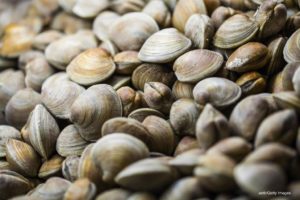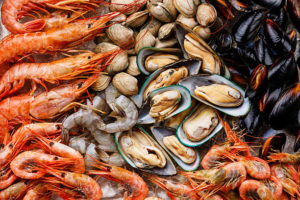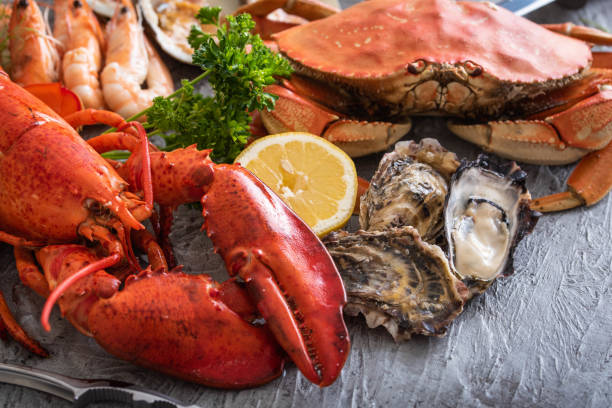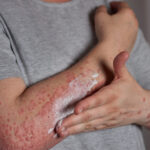Shellfish Transmitted Diseases
When we talk about shellfish disease, we need to understand the high health risks linked with mollusks and crustaceans which is in terms with where they live and what they eat. This will make it a lot easier to understand the disadvantages of shellfish consumption.
People who are devoted to eating shellfish hold the food in high regard, however, no other foods is as contaminated by viruses, bacteria and toxins. It is somewhat difficult to make these individuals understand how much diseases are being carried by shellfish.
To understand more about shellfish disease, we need to know how these creatures feed. Since they are classified into two main groups, zoologically; we ought to know what they feed on and the probable diseases that come along consuming them.
They are grouped into:
- Crustaceans
- Mollusks
In understanding shellfish disease, this particular group called the crustaceans have species that acts like sea vultures. They go straight to the sea bottom clearing the organic wastes and remains of the sea.
Another species of this same group classified as carnivores tear up other aquatic animals, choosing the sick and weak ones which usually hold more germs.

With this we know how some groups or species of shellfish contract diseases. Another set known as cannibals devour their young ones which may have lost their protective shell as a result of molting.
The fact that they feed themselves explains why they harbour the most diseases and it also tells why they accumulate the most toxins and contaminants.
Consequently, shellfish disease is well linked to the feeding habit of the mollusks especially bivalve mollusks which feed by filtering the water in large amounts summing up to 9 to 10 liters per hour.
This feeding habit makes their tissues accumulate pathogenic microbes, chemical pollutants and toxins that come through toxic dinoflagellate algea. This particular algae do well in polluted water.
Transmitted Diseases
In both fresh and salt water, there are germs living in these waters. Both bacterial and viral germs and due to the feeding habit of shellfish, this makes them prone or expose them to all sorts of contamination.

Consumption of shellfish brings about numerous food-related disease. For example, in Japan, eating raw fish or shellfish is quite on the increase and rampant and they hold highest incidence of shellfish disease.
Bacterial Diseases transmitted by shellfish
There are two ways in which shellfish may be contaminated bacterially. They are:
- While in the sea
- After capture which involves the way they are being handled or the utensils or containers storing them. This is because shellfish are usually contaminated from external sources.
The following are Tue pathogenic bacteria linked with shellfish
- Staphylococcus aureus
- Salmonella and shigella bacteria
- Vibrosis
- Vibro vulnificus
- Aeromonas hydrophyla
- Clostridium botulinum
Staphylococcus aureus
This one comes as a result of handling and the processing. Therefore, eating shellfish that’s containing this bacterial disease will result to gastroenteritis and general symptoms of food poisoning is also accompanied by it.
Salmonella and Shigella bacteria
The bivalve mollusks such as oysters, mussels etc. and poultry and the principal vectors of salmonella and this bacteria is most responsible for gastroenteritis like typhoid fever.
Vibrosis

Six out of the eleven known pathogens of the genus vibrio are carried by shellfish. Vibrio cholera is most feared which causes cholera. However, other species also cause infectious diarrhea.
It is said that this shellfish disease is the main cause of cholera in developed nations and is transmitted through raw oyster consumption.
Vibro vulnificus
This pathogenic vibrio is becoming more common in the Pacific and Atlantic oceans. It is responsible for the following:
- By contact which may be through a wound provided by an infected shellfish and the severe infection produced may require amputation.
- Ingestion of shellfish that’s contaminated brings about gastroenteritis followed by blood poisoning.
Aeromonas hydrophyla
This bacterial disease is responsible for several cases of gastroenteritis. And oysters is principal dietary source and other species of mollusks. It is quite resistant to freezing.
Clostridium botulinum
This causes a shellfish disease called botulism which is commonly associated with preserved or canned foods. The transmission is believed to be through poorly cooked or raw shellfish.
Viral shellfish disease

Viruses get to the sea via wastewater dumped all the way from the coast. Most of which are living in the human digestive tract and then passed out through the feces. Most of them are enteroviruses.
There are two characteristics of enteroviruses which make them extremely dangerous.
- They survive in the marine water for a very long period of time and this type of shellfish disease (hepatitis A virus) can stay alive in the sea more than one year. According to emedicinehealth, shellfish harvested in coastal zones can easily be contaminated.
- They survive processing at wastewater treatment plants
- They feed on decaying organic matter
- They infect shellfish, crustaceans and mollusks.
Viruses found in shellfish
The following are the viruses found in shellfish
- Hepatitis A virus
- Hepatitis C
- Gastroenteritis-producing viruses
Hepatitis A
This is very common in shellfish. In Britain a study says 25% of all the hepatitis A outbreaks particularly in UK is linked to bivalve mollusks while 1.7% of oysters, cockles and mussels are all contaminated with this virus, hepatitis A
Hepatitis C
This one is quite severe even more than hepatitis A. Studies have it that many cases linked to this type of hepatitis is through the consumption of raw oysters.
Gastroenteritis-producing viruses
Shellfish disease such as gastroenteritis has been linked to consumption of shellfish. This is because shellfish may contain various viruses which cause gastroenteritis. The best known of them is the Norwalk virus. The following are the characteristics of these viruses:
- The gastroenteritis caused by this type of virus are quite severe compared to the diarrhea produced by diarrheic shellfish toxins
- Contaminated species of shellfish seem normal both to the taste and visually. The show no sign of being contaminated. Trained microbiologists find it difficult detecting any viruses in these creatures.
- They are not totally destroyed during cooking; whether roasted, fried or steamed provide no protection from the viruses.
Eating shellfish is always a risk to our health and in some, cases the situations of the risk are quite high. This post is limited to shellfish disease and so does not mean there are no good things about shellfish.
There are good aspects of shellfish such flavorful, nutritious and very rich in vitamin B12 an iron. Only the liver of mammals exceed oysters in vitamin B12 and iron.
Foods that make allergies worse

A graduate of Computer Science and Information Management Technology. Diploma – Caregiving, Certificates – Dementia and Diabetes Awareness and Management. A researcher, blogger, songwriter, singer and acoustic guitarist. Born in an environment where natural talents such as healing are imparted at our natural birth. This natural talents of healing is the result of our genetic inheritance and the training from family environment.



















